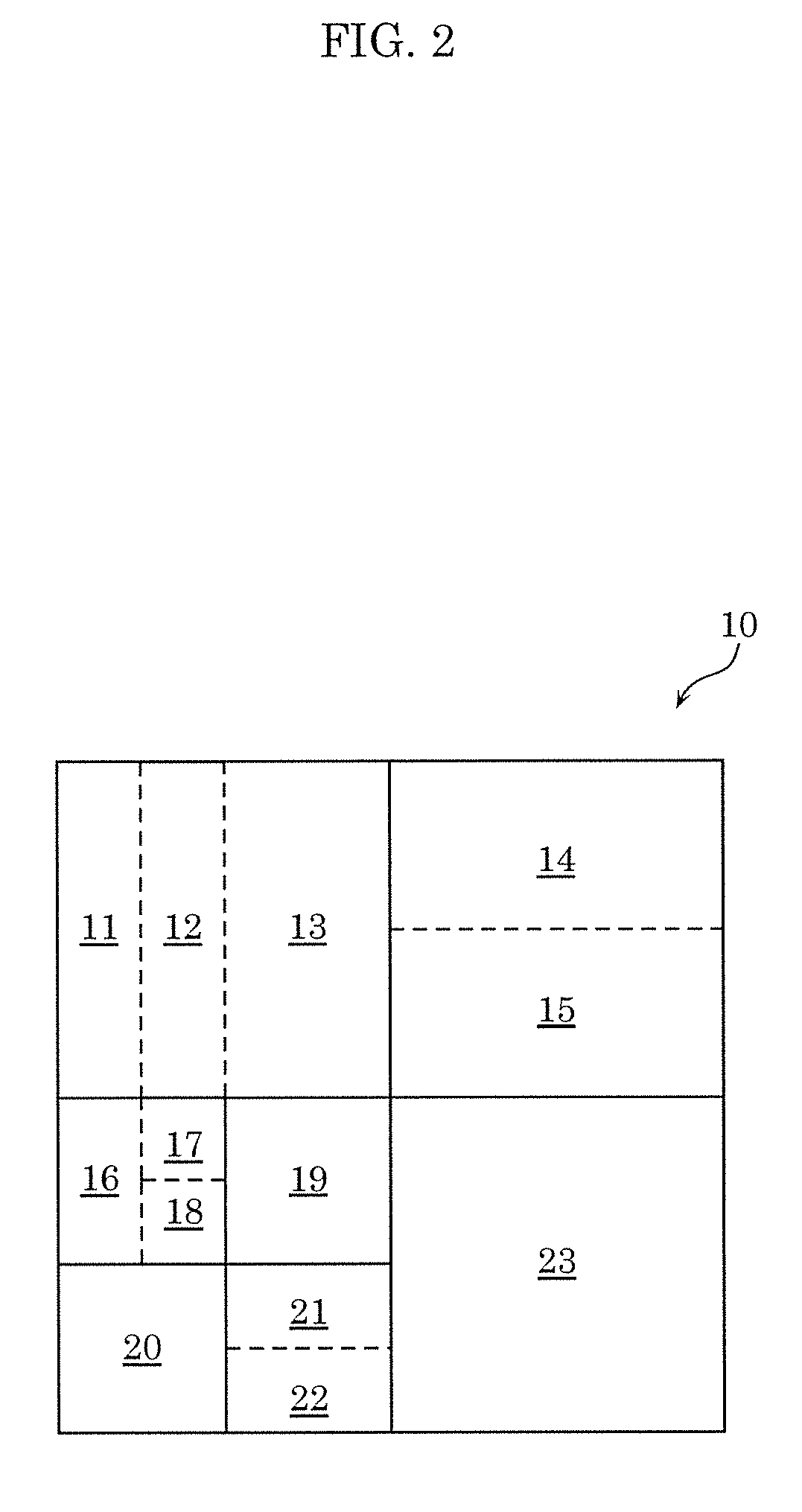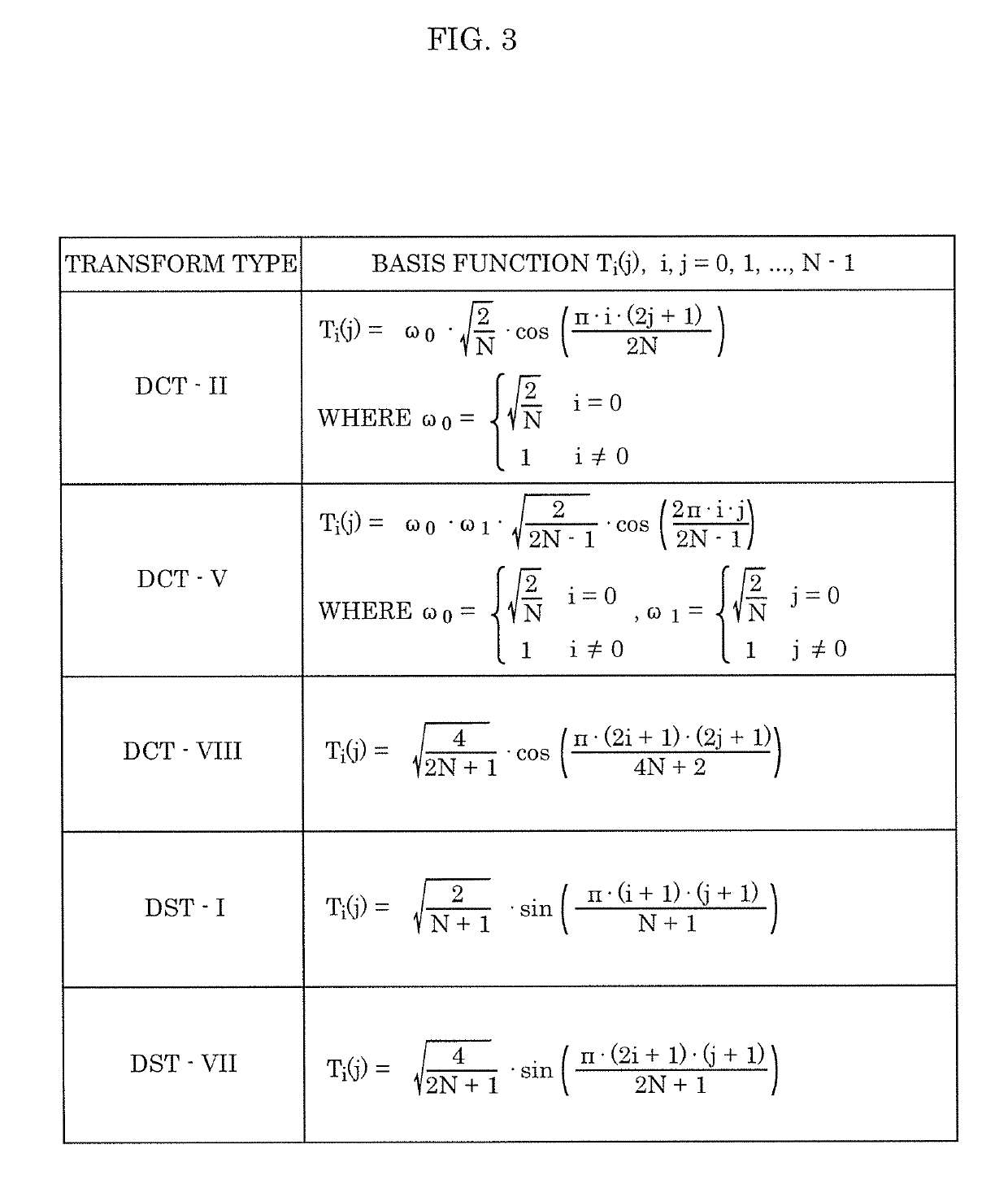Encoder, decoder, encoding method, and decoding method
- Summary
- Abstract
- Description
- Claims
- Application Information
AI Technical Summary
Benefits of technology
Problems solved by technology
Method used
Image
Examples
embodiment 1
[Encoder Outline]
[0214]First, the encoder according to Embodiment 1 will be outlined. FIG. 1 is a block diagram illustrating a functional configuration of encoder 100 according to Embodiment 1. Encoder 100 is a moving picture / picture encoder that encodes a moving picture / picture block by block.
[0215]As illustrated in FIG. 1, encoder 100 is a device that encodes a picture block by block, and includes splitter 102, subtractor 104, transformer 106, quantizer 108, entropy encoder 110, inverse quantizer 112, inverse transformer 114, adder 116, block memory 118, loop filter 120, frame memory 122, intra predictor 124, inter predictor 126, and prediction controller 128.
[0216]Encoder 100 is realized as, for example, a generic processor and memory. In this case, when a software program stored in the memory is executed by the processor, the processor functions as splitter 102, subtractor 104, transformer 106, quantizer 108, entropy encoder 110, inverse quantizer 112, inverse transformer 114, a...
embodiment 2
[0741]As described in each of the above embodiments, each functional block can typically be realized as an MPU and memory, for example. Moreover, processes performed by each of the functional blocks are typically realized by a program execution unit, such as a processor, reading and executing software (a program) recorded on a recording medium such as ROM. The software may be distributed via, for example, downloading, and may be recorded on a recording medium such as semiconductor memory and distributed. Note that each functional block can, of course, also be realized as hardware (dedicated circuit).
[0742]Moreover, the processing described in each of the embodiments may be realized via integrated processing using a single apparatus (system), and, alternatively, may be realized via decentralized processing using a plurality of apparatuses. Moreover, the processor that executes the above-described program may be a single processor or a plurality of processors. In other words, integrat...
PUM
 Login to View More
Login to View More Abstract
Description
Claims
Application Information
 Login to View More
Login to View More - R&D
- Intellectual Property
- Life Sciences
- Materials
- Tech Scout
- Unparalleled Data Quality
- Higher Quality Content
- 60% Fewer Hallucinations
Browse by: Latest US Patents, China's latest patents, Technical Efficacy Thesaurus, Application Domain, Technology Topic, Popular Technical Reports.
© 2025 PatSnap. All rights reserved.Legal|Privacy policy|Modern Slavery Act Transparency Statement|Sitemap|About US| Contact US: help@patsnap.com



